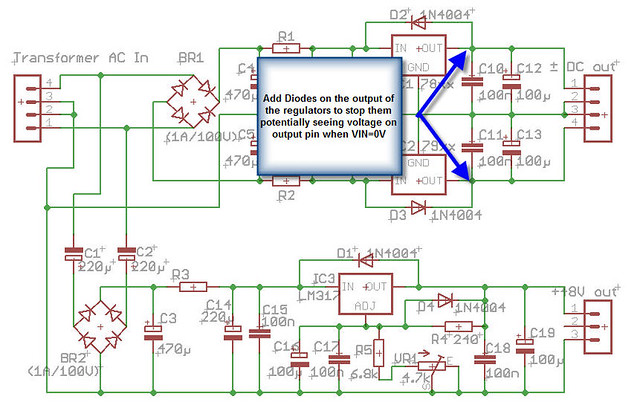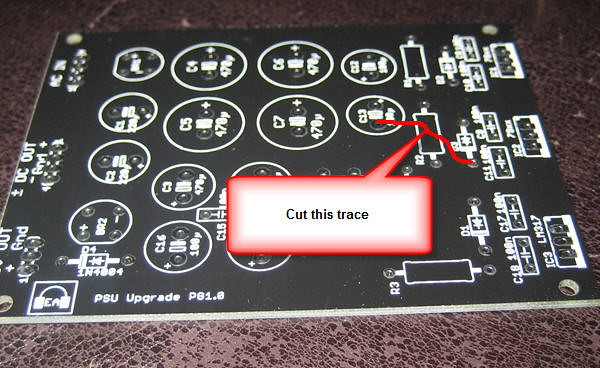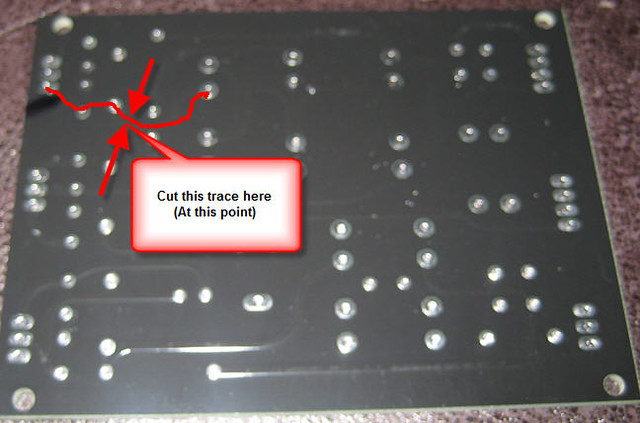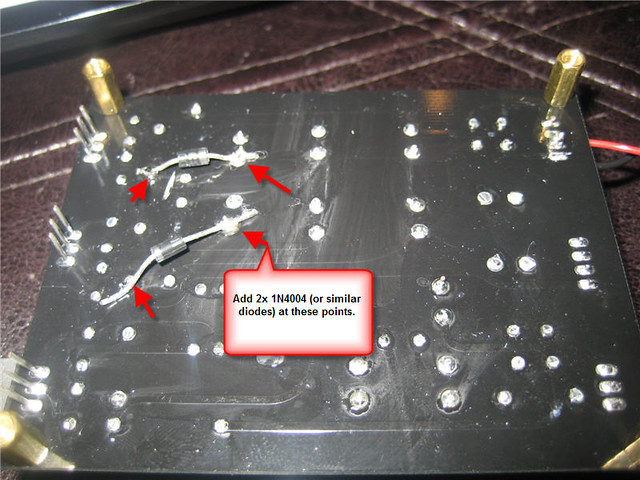Hello Folks,
quick intro. Expat Audio makes an Uber Power supply board, that takes the output of a secondary transformer, filters some of the noise, then runs it through regulators,while also using a voltage multiplier to create a Phantom power rail.
Phew, that is a mouthful!
Okay - here comes the mod details. I'm a chicken when it comes to mains power. It makes me nervous. This combined with some feedback I received regarding the Eden Preamps made me look into using an external wall wart (power supply) to make the power supply, rather than having a mains power IEC connector, then a toroidal transformer in my design.
The trouble with external power supplies (or wall warts as I like to call them) is that their output is single ended. It swings above ground, the it swings negative. This means a few things:
a) When its rectified, you get an output voltage similar to that of a half bridge rectifier (y'all can google that if you like)
b) One output can be present before the other.
That has two knockon effects
a) More ripple before the regulators. To compensate, one can add greater capacitance to slow down the sag, or simply start at a higher voltage!
b) With a balanced toroidal, each regulator sees voltage at the same time. But, in a single ended input, on startup, one regulator will start before the other. That means the output of the one that hasn't started may see voltage from the other. Eeek. Not good.
We can compensate for this on the Uber Power supply by simply adding diodes to the output of the regulators, which allows voltage to flow out of the regulators, but not back in.

Schematic with modification details

Trace to cut on the top of the Uber PSU board

Trace to cut on the bottom of the Uber PSU Board

Diodes to Add
Those diodes should be soldered on to the legs of the appropriate capacitors.
External Power Supply Notes:
These modifications, along with a 18VAC external power supply can support ±15V and +48V rails. I've found that 16VAC transformers don't drive the voltage multiplier high enough for the +48V regulator. However, if you're developing a system that doesn't require phantom power 16VAC will be sufficient.
Jameco has a lovely selection of AC to AC external power supplies. Please make sure you use an AC to AC supply.
Jameco Part no. 121216
I'll post a video showing multimeter readings soon.
/R
quick intro. Expat Audio makes an Uber Power supply board, that takes the output of a secondary transformer, filters some of the noise, then runs it through regulators,while also using a voltage multiplier to create a Phantom power rail.
Phew, that is a mouthful!
Okay - here comes the mod details. I'm a chicken when it comes to mains power. It makes me nervous. This combined with some feedback I received regarding the Eden Preamps made me look into using an external wall wart (power supply) to make the power supply, rather than having a mains power IEC connector, then a toroidal transformer in my design.
The trouble with external power supplies (or wall warts as I like to call them) is that their output is single ended. It swings above ground, the it swings negative. This means a few things:
a) When its rectified, you get an output voltage similar to that of a half bridge rectifier (y'all can google that if you like)
b) One output can be present before the other.
That has two knockon effects
a) More ripple before the regulators. To compensate, one can add greater capacitance to slow down the sag, or simply start at a higher voltage!
b) With a balanced toroidal, each regulator sees voltage at the same time. But, in a single ended input, on startup, one regulator will start before the other. That means the output of the one that hasn't started may see voltage from the other. Eeek. Not good.
We can compensate for this on the Uber Power supply by simply adding diodes to the output of the regulators, which allows voltage to flow out of the regulators, but not back in.

Schematic with modification details

Trace to cut on the top of the Uber PSU board

Trace to cut on the bottom of the Uber PSU Board

Diodes to Add
Those diodes should be soldered on to the legs of the appropriate capacitors.
External Power Supply Notes:
These modifications, along with a 18VAC external power supply can support ±15V and +48V rails. I've found that 16VAC transformers don't drive the voltage multiplier high enough for the +48V regulator. However, if you're developing a system that doesn't require phantom power 16VAC will be sufficient.
Jameco has a lovely selection of AC to AC external power supplies. Please make sure you use an AC to AC supply.
Jameco Part no. 121216
I'll post a video showing multimeter readings soon.
/R



